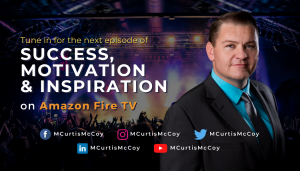Recognizing red flags from you’re experience of being betrayed or traumatized in past relationships, entering new relationships can feel like walking through a minefield. The emotional scars of past hurt can make it challenging to trust others or trust yourself. Spotting these red flags and protecting yourself without shutting down emotionally is crucial in building healthy, fulfilling relationships in the future.
This guide will explore what red flags are, how to spot them, and actionable steps to protect your well-being while fostering open-hearted connections.
What Are Red Flags in Relationships?
Red flags are warning signs indicating potentially unhealthy behaviors, attitudes, or patterns in a person or relationship. While no one is perfect, red flags suggest deeper issues that could lead to emotional, physical, or psychological harm. These warning signs often surface early but may be overlooked due to infatuation, a desire to make the relationship work, or a lack of awareness.
Common Types of Red Flags
- Control and Manipulation
A partner who seeks to control your actions, choices, or relationships is a significant red flag. Manipulative behaviors like guilt-tripping, gaslighting, or isolating you from friends and family are signs of unhealthy dynamics. - Lack of Empathy
If someone dismisses your feelings, minimizes your experiences, or shows no concern for your emotional well-being, they may lack the empathy necessary for a healthy partnership. - Disrespect for Boundaries
Ignoring or violating your boundaries—whether emotional, physical, or mental—is a critical red flag. - Inconsistency and Deception
Repeated lying, evasiveness, or an inability to follow through on promises indicates a lack of reliability and trustworthiness. - Excessive Jealousy or Possessiveness
While some jealousy is natural, excessive or irrational jealousy can lead to controlling behavior and emotional abuse.
Why Do We Overlook Red Flags?
Many people miss or dismiss red flags for various reasons, often rooted in emotional and psychological patterns shaped by past experiences. Understanding these tendencies can help you break free from harmful cycles.
Common Reasons We Ignore Red Flags
- Desire for Connection
Loneliness or a longing for love may cause you to overlook warning signs, rationalizing unhealthy behavior to maintain the relationship. - Optimism Bias
The belief that things will improve or that your partner will change can lead to staying in toxic situations. - Low Self-Esteem
When self-worth is diminished, you might feel undeserving of a healthy relationship, tolerating behaviors you shouldn’t. - Past Conditioning
If you grew up witnessing unhealthy relationships or experienced trauma, you might struggle to recognize what a healthy partnership looks like.
How to Spot Red Flags Early
The ability to spot red flags early on requires heightened self-awareness and observation. While no one should approach relationships with constant suspicion, paying attention to behaviors and patterns is essential.
Tips for Identifying Red Flags
- Listen to Your Gut
Your intuition often picks up on subtle cues that something is off. If you feel uneasy or sense that a partner’s actions don’t align with their words, don’t ignore those feelings. - Observe Patterns, Not Just Incidents
A one-time mistake might not be a red flag, but repeated behaviors, such as consistent lying or lack of respect, indicate deeper issues. - Look for Reciprocity
Healthy relationships involve mutual effort, respect, and care. If you find yourself constantly giving while the other person takes, it’s a warning sign. - Notice How They Handle Conflict
Pay attention to how your partner reacts during disagreements. Are they respectful and willing to work through issues, or do they resort to blame, anger, or stonewalling? - Assess Their Relationships With Others
Observe how your partner treats family, friends, and even strangers. Disrespect or hostility toward others could indicate how they’ll eventually treat you.
Protecting Yourself in Future Relationships
Once you’ve learned to recognize red flags, the next step is safeguarding your emotional and mental well-being. This doesn’t mean building walls, but rather setting boundaries and nurturing self-awareness.
Actionable Steps to Protect Yourself
- Define Your Boundaries
Before entering a relationship, identify your non-negotiables. These might include honesty, respect, and emotional support. Communicate these boundaries clearly and enforce them without apology. - Prioritize Self-Worth
Healing from past trauma involves rebuilding your self-esteem. When you value yourself, you’re less likely to tolerate mistreatment or settle for less than you deserve. - Take Your Time
Avoid rushing into relationships. Allow time to get to know someone deeply before making commitments. Time reveals patterns that might not be apparent initially. - Practice Emotional Independence
While intimacy is essential, avoid becoming overly reliant on your partner for validation or happiness. Cultivate hobbies, friendships, and a fulfilling life outside the relationship. - Seek Therapy or Support
If you’ve experienced significant trauma or betrayal, working with a therapist can provide tools to heal and establish healthy relational patterns. - Trust Actions Over Words
Pay attention to what a partner does rather than what they say. Consistency between words and actions is a hallmark of trustworthiness.
Building Trust Without Ignoring Warning Signs
Balancing vulnerability with self-protection can be challenging, especially after betrayal. However, learning to trust again is essential for emotional growth and connection.
How to Build Trust Safely
- Start Small
Begin by sharing less sensitive aspects of yourself and observe how your partner responds. Gradually open up as trust builds. - Communicate Openly
Share your concerns and past experiences with your partner. A healthy partner will respond with empathy and understanding rather than defensiveness. - Set Realistic Expectations
Recognize that no relationship is perfect. While you should address red flags, minor imperfections don’t necessarily mean a relationship is doomed.
When to Walk Away
Despite your best efforts, some relationships cannot be salvaged. Recognizing when to leave is an act of self-love and courage.
Signs It’s Time to Leave
- Repeated Boundary Violations
If your partner consistently disrespects your boundaries, it’s a clear sign the relationship isn’t healthy. - Lack of Accountability
A partner who refuses to take responsibility for their actions or blames you for their behavior is unlikely to change. - Escalating Toxic Behavior
Emotional manipulation, verbal abuse, or physical aggression are immediate reasons to end the relationship. - You Feel Unsafe
Your emotional and physical safety should always be non-negotiable. If you feel threatened or unsafe, prioritize your well-being by exiting the relationship.
The Role of Healing in Spotting Red Flags
Healing from past trauma is a crucial step in developing the awareness and resilience needed to recognize red flags. Unhealed wounds can cloud judgment, making it difficult to differentiate between healthy and toxic behaviors.
Steps to Heal for a Better Future
- Reflect on Past Relationships
Identify patterns or red flags you missed previously. Use these insights to guide your future choices. - Focus on Self-Growth
Engage in activities that nurture your mind, body, and spirit. Personal growth enhances your ability to attract and maintain healthy relationships. - Surround Yourself With Support
Lean on friends, family, or support groups who reinforce your worth and encourage positive decisions.
Conclusion
Spotting red flags and protecting yourself in future relationships is a skill that requires self-awareness, courage, and commitment to your well-being. By understanding what red flags look like, why we overlook them, and how to safeguard yourself, you can create space for love and connection without compromising your safety or happiness.
Remember, you deserve relationships that uplift and inspire you. Trust yourself, honor your boundaries, and never settle for less than the respect and care you deserve. Healing is a journey, but every step forward brings you closer to the healthy, fulfilling relationships you’re meant to have.




